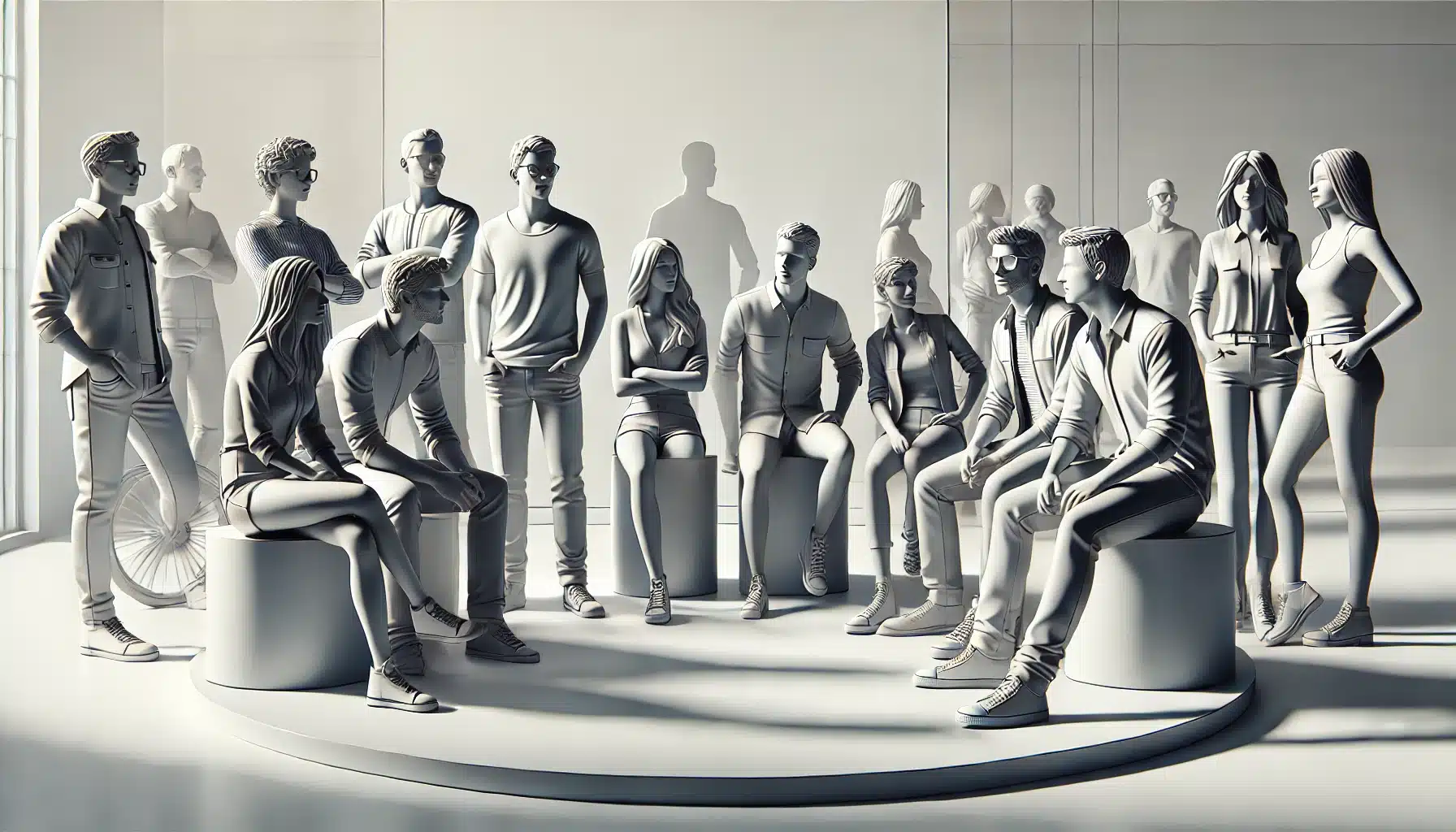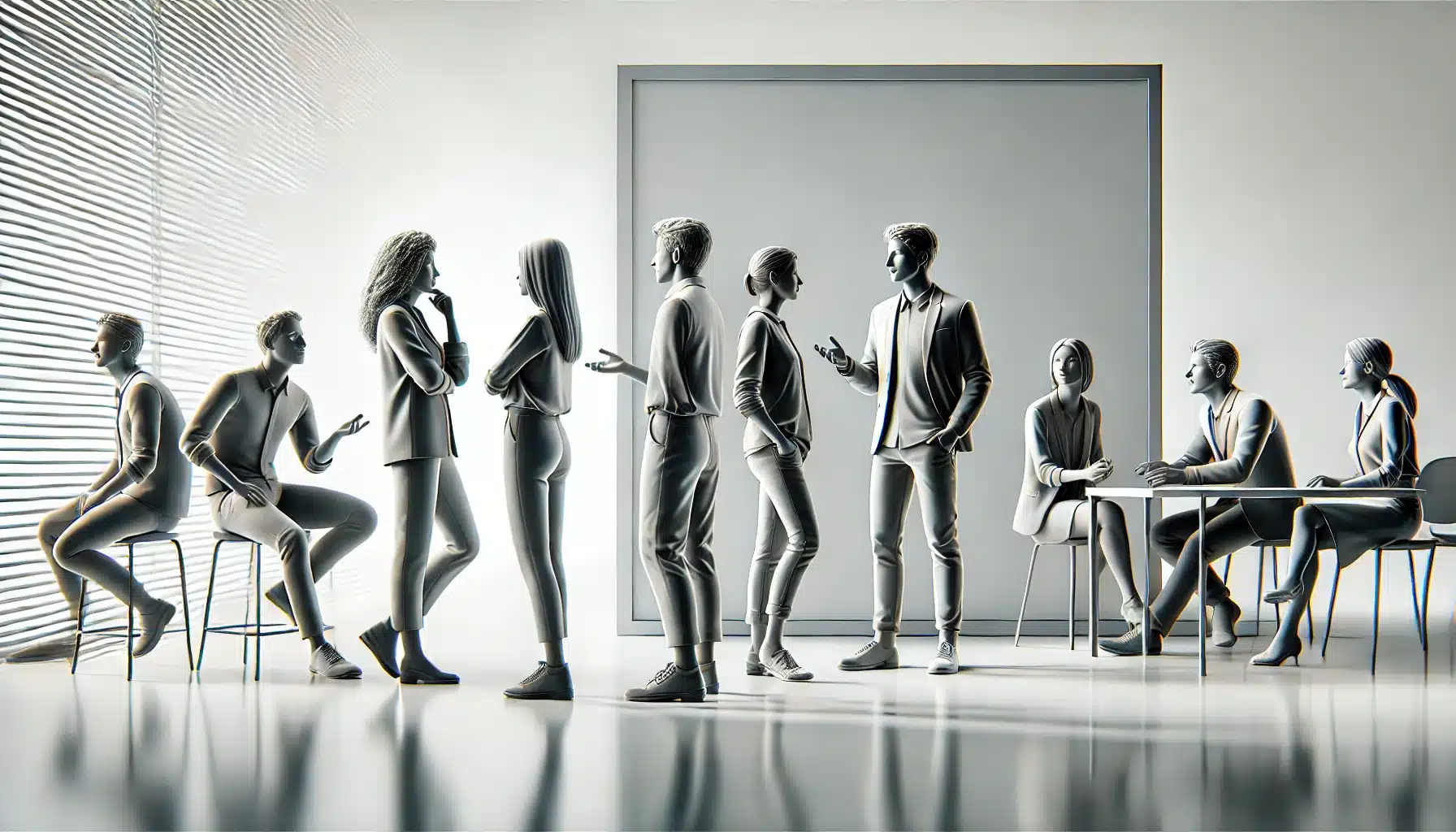Understanding Social Dynamics: A Comprehensive Guide in 6 Parts
This guide will examine the intricacies of human interaction, offering knowledge that can positively impact your personal and professional relationships.
About this article:
Overview:
Social dynamics governs how we navigate relationships, hierarchies, and influence. From psychological theories like social exchange and self-presentation to practical applications in leadership, marketing, and conflict resolution, understanding these principles enhances social intelligence. Let’s discuss.
Tags:
Uncategorized
Topics:
Influence, Social Skills, Social Intelligence, Social Dynamics
Date:
Author(s):
Cain Parish
1. The Foundations of Social Dynamics
Social dynamics functions as the unseen force governing how we relate to one another, form hierarchies, and maneuver through social environments. Let’s examine its fundamental components:
a) Social Cognition
Social cognition encompasses our mental processes for handling social information. It enables you to:
- Interpret social cues
- Make inferences about others’ intentions
- Predict social outcomes
Picture entering a room and immediately detecting tension between two colleagues – that would be strong social cognition.
b) Social Influence
This potent force manifests in various forms, such as:
- Conformity
- Compliance
- Obedience
Have you altered your opinion upon realizing you’re in the minority? That demonstrates social influence.
c) Group Dynamics
Group dynamics elucidate phenomena like groupthink, where the desire for harmony can supersede rational decision-making. Consider a team making a poor decision because no one challenges the consensus.

d) Status and Hierarchy
Hierarchies naturally form in any social setting. Grasping how status is assigned, maintained, and challenged is essential. It could involve observing who speaks first in a meeting or analyzing corporate social hierarchies.
2. The Psychology of Social Interaction
To thoroughly comprehend social dynamics, we must examine the psychological mechanisms underlying our social behaviors:
a) Attachment Theory
Developed by John Bowlby, this theory explains how our early relationships shape our approach to social interactions throughout life. Someone with a secure attachment style might find forming close relationships and navigating social situations more manageable.
b) Social Exchange Theory
This theory proposes that social behavior results from an exchange process, aiming to maximize benefits and minimize costs. For instance, you might weigh the potential benefits of attending a networking event against the time and energy costs.
c) Self-Presentation Theory
This concept examines how individuals attempt to control others’ impressions of them. It forms the psychological basis for phenomena like impression management and personal branding. Consider how you carefully curate your social media presence – that exemplifies self-presentation theory.
d) Social Identity Theory
Developed by Henri Tajfel and John Turner, this theory explains how people’s sense of self is based on their group membership. It helps explain in-group favoritism and out-group discrimination. Consider the strong loyalty sports fans feel towards their team and the rivalry with opposing teams.
3. Practical Applications of Social Dynamics
Understanding social dynamics extends beyond academic pursuits – it has numerous real-world applications:
a) Leadership and Management
Leaders who grasp social dynamics can more effectively:
- Motivate teams
- Resolve conflicts
- Create cohesive work environments
A manager who recognizes the importance of status might ensure all team members have opportunities to contribute ideas in meetings, fostering a sense of value and inclusion.
b) Marketing and Persuasion
Marketers utilize social dynamics to create more effective campaigns. Understanding concepts like social proof allows marketers to craft messages that resonate with their target audience. A practical example is the use of customer testimonials or influencer endorsements to boost product credibility.
c) Conflict Resolution
Mediators and negotiators use their understanding of social dynamics to navigate complex interpersonal situations. By recognizing power imbalances, emotional undercurrents, and group dynamics, they can guide parties towards mutually beneficial resolutions.
d) Education
Educators who comprehend social dynamics can create more effective learning environments. Understanding how status hierarchies form in classrooms allows teachers to implement strategies promoting inclusivity and participation from all students.

4. Advanced Concepts in Social Dynamics
As we further examine the field, several advanced concepts emerge:
a) Social Network Analysis
This approach examines social relationships in terms of network theory, mapping and measuring relationships and flows between people, groups, or organizations. It’s used in fields ranging from epidemiology to business analysis.
b) Emotional Contagion
This phenomenon describes how emotions can spread from person to person, affecting mood and behavior on a larger scale. It explains how a single individual’s mood can influence an entire group’s emotional state.
c) Social Loafing
This concept describes the tendency for individuals to exert less effort when working in a group compared to when they work alone. Understanding this helps in designing more effective team structures and accountability systems.
d) Intersectionality
This framework examines how various social categorizations (such as race, class, and gender) interact on multiple levels, contributing to systematic social inequality. It’s crucial for understanding complex social dynamics in diverse societies.
5. Developing Social Intelligence
Social intelligence – the ability to navigate social situations effectively – is a key outcome of understanding social dynamics. Here are some strategies for enhancing your social intelligence:
- Active Listening: Fully concentrate on, understand, and respond to what others are saying.
- Empathy: Practice perspective-taking exercises to understand and share others’ feelings.
- Emotional Regulation: Use techniques like mindfulness and cognitive reframing to manage your emotions effectively.
- Situational Awareness: Develop keen observation and reflection skills to be attuned to the social environment.
Conclusion
Social dynamics is an extensive and intricate field that offers profound insights into human behavior and interaction. By understanding its core principles, psychological underpinnings, and practical applications, you can navigate the complex social world more effectively and ethically.
Whether in personal relationships, professional settings, or broader societal contexts, a grasp of social dynamics empowers you to create more harmonious, productive, and fulfilling social environments. As you continue to examine this fascinating field, approach it with curiosity, empathy, and a commitment to ethical practice.
Remember, the knowledge of social dynamics is a powerful tool , one that you can use to foster understanding, build stronger communities, and create positive change in the world around you. For additional reading, please see:
How To Be A Good Listener – Active Listening in 5 Steps
Assertiveness Training: How to Stand Up For Yourself Without Being Aggressive
Empathic Listening in Relationships: Meaning Examples and 10 Easy Steps
Read next:
8 Steps for Handling Conflict Resolution and Emotions in Healthy Relationships
Published
by
Cain Parish
Evidence-based strategies for managing conflict and emotions in relationships that turn disagreements into opportunities for deeper intimacy between partners.
Read more